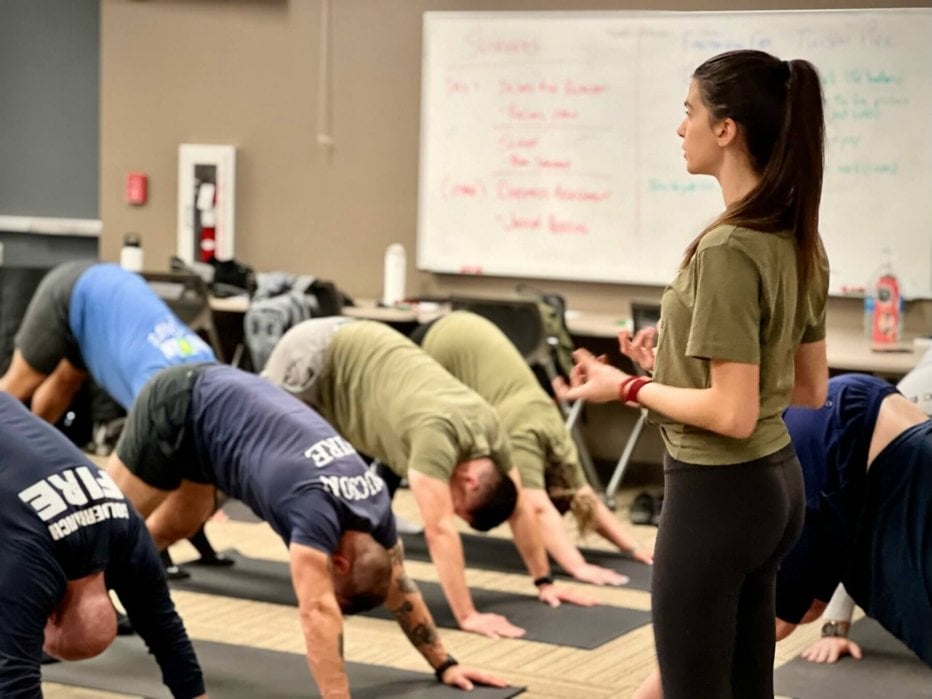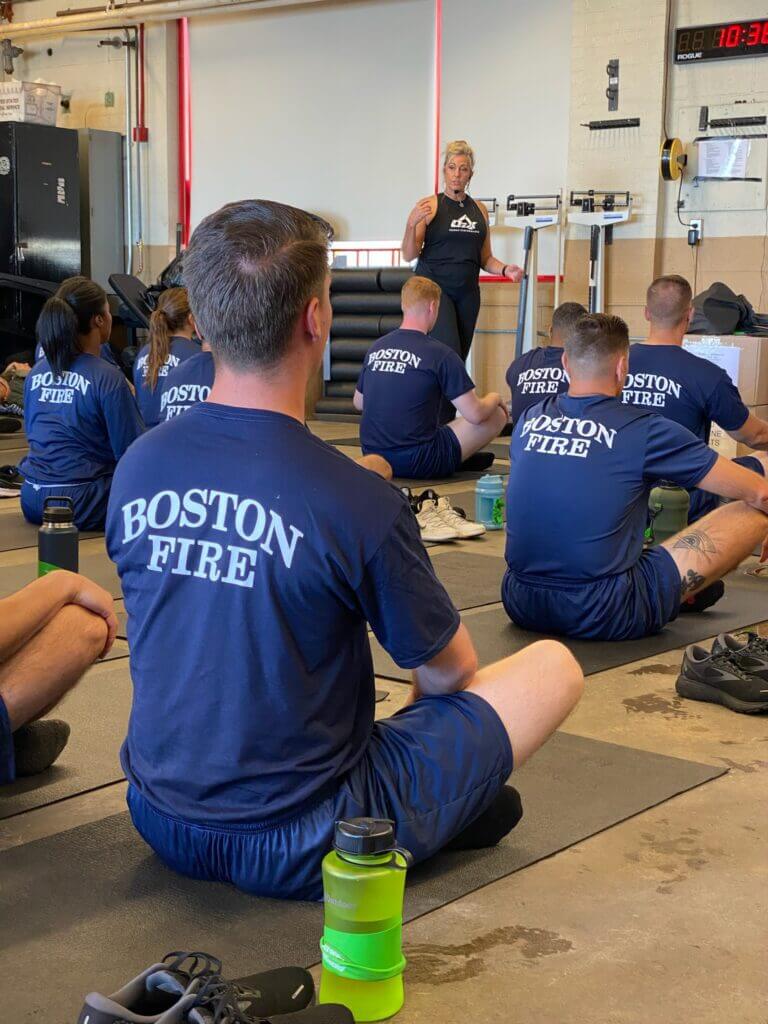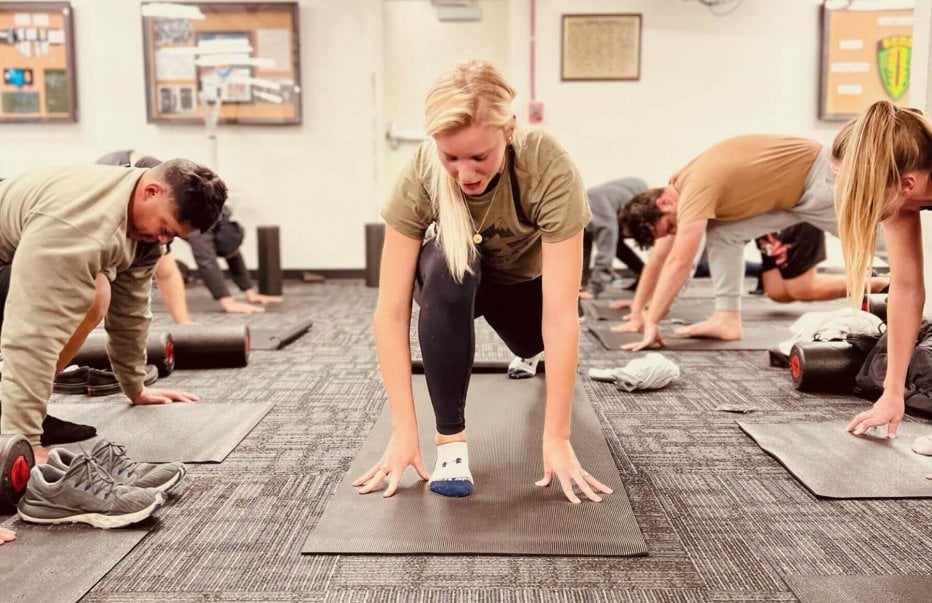Meditation For Beginners: Why Practice and How to Get Started

By: O2X Yoga Specialist Alexis Miller
Meditation. It’s a ten-letter word that can actually mean many different things: dread, ease, boredom, excitement, disdain, and happiness, just to name a few. For those new to meditation, it can seem like a tall task: sitting quietly for an extended period of time in a crossed-leg position, clearing one’s mind, and experiencing deep peace. In reality, this definition of meditation is a misrepresentation of the practice that can scare newcomers away from a practice that can support their overall health and well-being.
Though meditation may seem like an austere practice reserved for only the most devout, it’s actually a practice for everyone. Newcomers need not worry about starting a meditation practice – it’s not only doable but important.
Why meditation, and why now?
The practice of meditation is not new. For thousands of years, it has flourished in one form or another in various cultures and groups around the world. Though Buddhism has one of the deepest links to the general practice, meditation can be as secular as a practitioner chooses. With its rich history, those who practice meditation have for years championed its benefits to anyone who listened.
But the thing about anecdotal evidence? It leaves plenty of room for doubt.
Studies that support meditation
Modern science, however, has bridged that gap. Countless studies conducted in the last 30 years alone show that meditation supports people in living happier, healthier lives. From decreasing stress, anxiety, and chronic pain to increasing heart-rate variability, resilience, and overall wellness, research shows that this practice can radically change lives.
This shift from anecdotal evidence to hard scientific proof helped organizations that seem anathema to woo-woo adopt the practice of meditation: U.S. Special Forces, professional sports teams, first responders, and executive leaders of global organizations.
What reasons remain to not practice meditation? They are few and far between. And with the proliferation of apps, programs, teachers, and styles of meditation, there is a form of this practice that can meet anyone’s needs.
Without shifting back into grandiose notions of meditation, new practitioners should remember one thing: anyone can meditate and experience its benefits. Really, the hardest part is getting started.
Mindset shift
Instead of thinking of meditation as a restrictive ritual that can often yield frustration, odd body pains, and a lack of progress, it can help new meditators think of it as an opportunity to be mindful of what it’s like to be them at that moment. With this perspective shift, meditation is less about clearing one’s mind (which is impossible, by the way) and instead simply noticing what is present. Coming into the present moment, with full-body awareness, is an exquisite experience – one that many have yet to taste.
But the health benefits are clear, and with modern-day stresses seemingly adding up by the week, people cannot afford not to practice. Therefore, new meditators must approach the practice as part of their health and wellness routine. Just like drinking water and eating healthfully fuels the body, meditation does the same for the mind and the sense of self.



Establishing a routine
With a better understanding of the point of meditation, new practitioners must take the next step: incorporating it into their daily lives. First, it’s helpful to determine a time of day that feels the most supportive for meditation practice. For many, this means first thing in the morning, before the rest of the day has a chance to infiltrate the mind. For others, it’s in the middle of the day – a form of brain break that allows them to reset. Still, for others, practicing at night will enable them to unpack the day and settle into a deep, restful sleep.
Though meditation can be practiced at any time, it does help to start a practice by creating consistency. Meditation at the same time every day will not only help it become second nature, but it will make it easier to keep up with if it’s simply part of a daily routine.
A location for meditation matters
After determining when to meditate, beginners should consider where they want to meditate. Ideally, they locate a space that is quiet and free from distraction. Earbuds or noise-canceling headphones are effective tools for creating a quiet environment. Many people like having a special place to practice, while others prefer the comfort of a familiar environment. There’s no wrong answer here. Whatever works, works.
Then, new meditators need to consider how they want to meditate. This requires two lines of consideration: body position and style of meditation. For many, sitting on a meditation cushion is standard practice. However, that can be incredibly uncomfortable or simply unfeasible for others. Finding a comfortable chair or even lying down on one’s back are great alternatives.
Choosing the “best” type of practice (a subjective adjective, to be sure) will require trial and error. Silent, guided, ambient noise, mantra, loving-kindness, and chanting are just a few forms of meditation. Though their approach and processes vary widely, they all achieve the same goal: meditation. The “best” type of meditation is one that brings the practitioner into a deeper connection with themselves and supports them in feeling calm and at ease.
Keeping up with this new practice
Meditation is tough. It’s deceptively tricky because it seems so simple. But if there’s one piece of advice that any new meditator should remember, it’s this: don’t give up.
It doesn’t matter how many days in a row the mind wanders off on a thinking adventure, only to be abruptly pulled back by the ending bell. Every time someone meditates, they prioritize their health and wellness. And with each “sit” (as many meditators like to say), the mindfulness muscle gains strength.
These changes will be imperceptible at first. But over time and with enough practice, meditators will start to see the separation between what’s happening and the true self. Instead of reacting to every circumstance life throws their way and taking it personally, they’ll be able to respond with clarity and understand that life simply happens on life’s terms.
Regardless if that last sentence hits home or sounds like snake oil, those preparing to start a meditation practice should ask themselves: What do I have to lose? Committing to a meditation practice may require deprioritizing other tasks and experiencing some discomfort from time to time. But, as their experience with practicing grows, new meditators will likely come to discover that meditation comes to mean something else entirely: peace.
About O2X Yoga Specialist Alexis Miller
Alexis Miller is an O2X Yoga and iRest Specialist. She is a 500-Hour RYT; iRest Level 1 Certified Teacher; Certified Warriors at Ease Teacher; and a Radiant Child Yoga Approved Teacher. For over five years she has offered yoga and meditation to a wide variety of clients — a bulk of whom are affiliated with the military community. Alexis has taught over 800 hours of yoga and meditation and continues to teach on a weekly basis. She has partnered with organizations like the USO to provide guided meditations to members of the military community. She has also offered yoga and meditation to Air Force units for Unit PT. She developed the Wild Blue Yonder Meditations podcast to offer a free resource for practicing yoga nidra. She publishes two new meditations a week. She has worked with top teachers — like Molly Birkholm, Swami Kashi and Susan Alden — and continues to train in order to foster a continued sense of curiosity and growth professionally. Providing yoga and meditation to the military community is her passion and she hopes to expand the prevalence of the practices in military communities across the world.
About O2X Human Performance
O2X Human Performance provides comprehensive, science-backed programs to hundreds of public safety departments, federal agencies, and the military. O2X works with clients to elevate culture, improve mental and physical well-being, support healthy lifestyles, and reduce healthcare costs associated with injuries and illnesses. Driven by results and cutting-edge research, O2X programs are designed and delivered by a team of Special Operations veterans, high-level athletes, and hundreds of leading experts in their respective fields of human performance.
Podcast
Contests & Promotions













